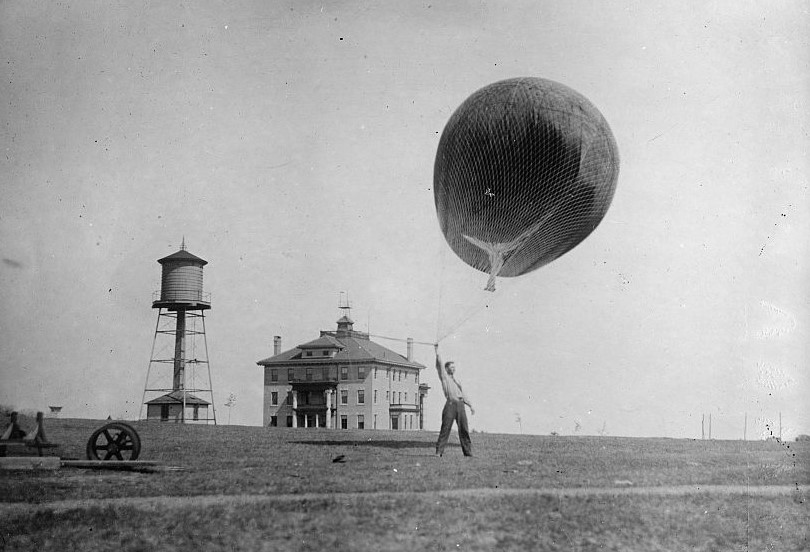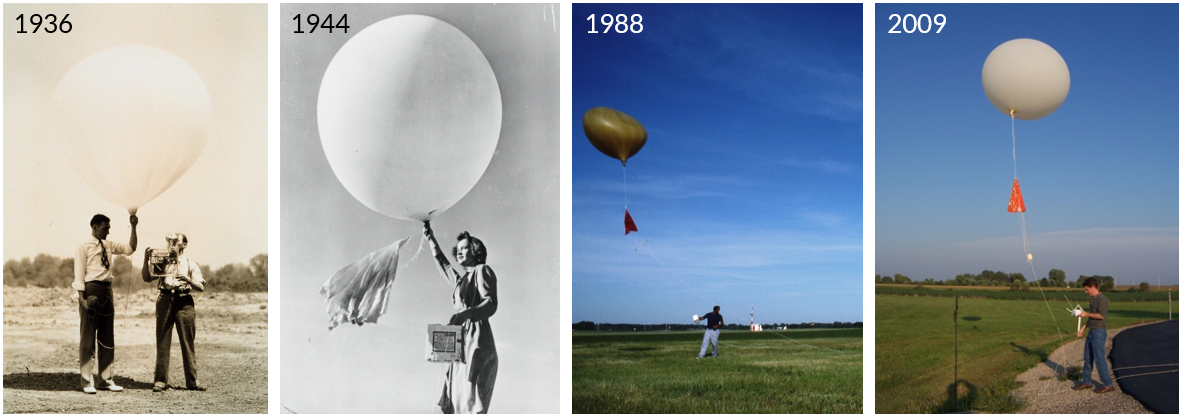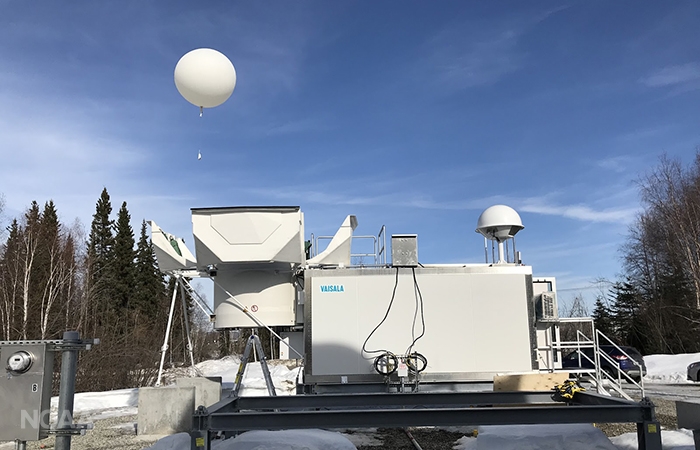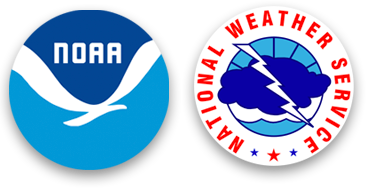The Trusty Weather Balloon - National Weather Service Heritage

The Trusty Weather Balloon
By Chris Geelhart (chris.geelhart@noaa.gov)Ever find a white box with a parachute and shreds of a balloon attached to it? The National Weather Service has been utilizing balloons for decades to the measure the upper atmosphere. Where it returns to Earth is up to Mother Nature. Depending on season, it may land a few miles away from its launch location, or a few hundred miles away. The equipment remains may not be discovered for weeks or months, especially if it lands in farm fields.
The Weather Bureau began its upper atmosphere observations in 1894, utilizing kites tethered by piano wire. The downsides of this method were the limited distance kites could ascend (less than 2 miles), the inability to use them if the wind was too light or too strong, and potential for the kites to break away. While manned balloons had previously been used in Europe, this was also a dangerous method. The kites gave way to airplanes in the 1930s, which also had weather and height limits.

Testing of unmanned balloons to carry the weather instruments began around 1906 at the Weather Bureau's Mount Weather facility in Virginia. The balloons, similar to the kites, were tethered, but were reaching heights over 20,000 feet. By 1909, work began in portions of the central U.S. in testing the use of free-rising balloons. Heights of 14-15 miles were reached near Indianapolis and Omaha. These balloons were tracked from the ground to determine winds aloft, but any other data was not available until the equipment was retrieved; this led to the development of radio-meteographs (or "radiosondes") that sent the data back to the launch site. Crude radiosondes were tested in the 1920's and saw widespread deployment in the 1930's.

on April 19, 2018.
Several models of radiosondes have been used over the years, but the concept of using a balloon to carry the weather equipment has persisted to the present day. Twice a day, at 92 stations, the NWS launches these balloons. They are filled with hydrogen or helium, and once launched, the balloon will typically ascend to an altitude of at least 100,000 feet before rupturing. When released, the balloon is about 5 feet in diameter, but will expand to 20-25 feet in diameter before rupturing in the thin air. A parachute is usually attached to slow the equipment's descent back to the surface.
While the number of employees involved in upper air launches has decreased over the years, launches still require someone to inflate and release the balloon. However, even this is changing. Recent efforts in Alaska have focused on testing automated launch systems. An "autolauncher" can release 24 balloons before needing to be restocked. The technology has been deployed to all 13 balloon launching stations across Alaska, where weather and staffing can make it difficult to conduct manual launches on schedule.
For more information, check out the following links: A Brief History of Upper-Air Observations (NWS Headquarters), NOAA news release on the autolaunchers (May 2018). Also, you can watch a balloon launch on our YouTube channel .
